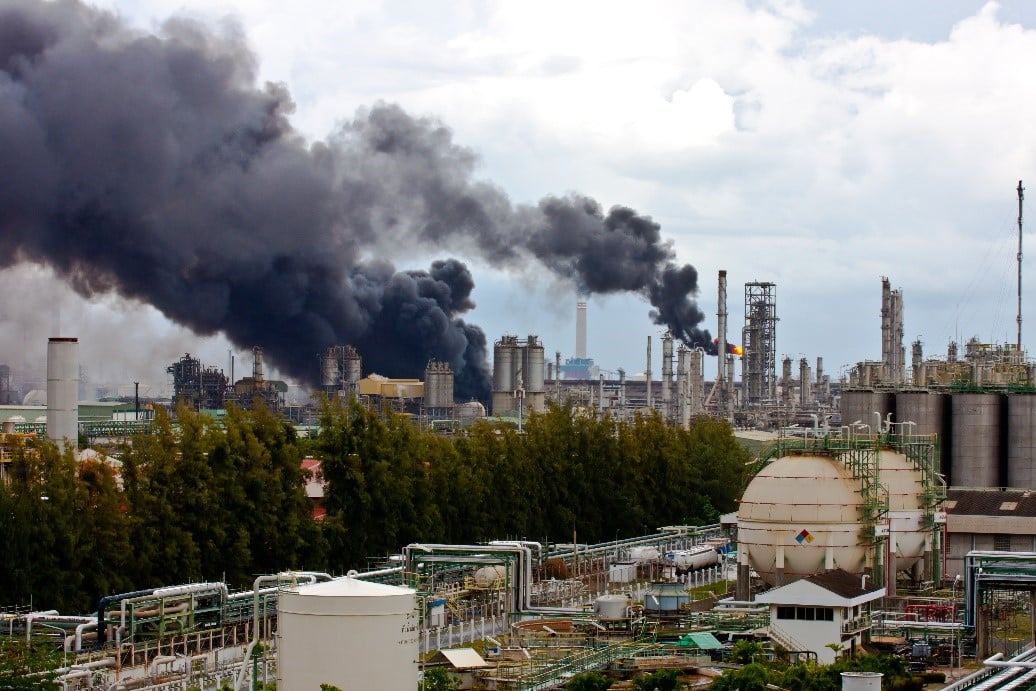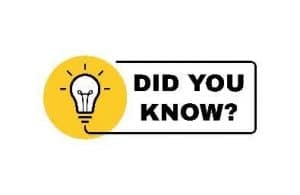
What is the Lubrizol Circular?
The Lubrizol Circular is a set of regulatory texts aimed at strengthening the prevention and management of industrial accidents, particularly those involving flammable liquids.
These texts were published in September 2020, following the fire at the Lubrizol plant in Rouen (France) in 2019, which caused significant environmental and health damage.
The Lubrizol Circular mainly concerns Seveso-classified sites, i.e. facilities presenting major risks to the safety of people and the environment.
In particular, it requires operators of such sites to :
- implement internal emergency plans, with resources for environmental sampling and analysis, as well as for post-accident restoration and clean-up
- train staff on what to do in the event of an incident or accident
- mention decomposition products likely to be released in the event of fire in hazard studies
- review available technologies to improve risk management
- make insurer’s reports on risk prevention and control measures available to the Classified Installations Inspectorate.
The Lubrizol circular also modifies the requirements for the storage of flammable liquids in mobile containers, in buildings or outdoors, for all sites subject to authorization, registration or declaration. It introduces stricter rules on layout, storage conditions, retention and fire detection. It also provides for a gradual ban on certain types of meltable mobile containers, i.e. those which can melt under the effect of heat and release their contents.
The Lubrizol circular aims to improve the safety of industrial facilities and reduce the potential impact of an accident on the population and the environment. It is in line with the recommendations made by the report “Pour une chaîne logistique plus compétitive au service des entreprises et du développement durable” submitted to the French Prime Minister in September 2019. It came into force on January 1, 2021 for new facilities, and provides for compliance deadlines up to 2026 for existing facilities.
Sites covered by the Lubrizol Circular must be equipped with sampling media for use in the event of a fire. These include wipes, filters, samplers or containers adapted to the nature of the samples to be taken (air, soot, water, soil, plants, etc.). The aim of these samples is to determine the impact of the fire on the environment and health, by analyzing the decomposition products emitted by the substances involved in the fire. The guide to sampling and analysis strategies following a technological accident, published by INERIS, gives recommendations on the choice of samplers, sampling methods, analyses to be carried out and possible interpretations.
Air measurements are to be considered in the context of the Lubrizol Circular:
Operators of plants classified as Seveso high threshold must have an independent capacity to rapidly take
sample and measurements in the surrounding air in the event of accidental emissions.
How can TERA Environnement help you prepare for an industrial accident?
TERA Environnement offers analysis of a wide range of chemical contaminants in the air, and provides the sampling media and equipment needed for these analyses 7 days a week.
Our laboratory is also on call at weekends and on public holidays, and can provide emergency results within 24 to 48 hours all year round. Contact us for our on-call conditions.
Discover the 6 reasons to choose our laboratory to help you apply the Lubrizol Circular.
1- TERA Environnement is a member of RIPA (Réseau des Intervenants en situation Post-Accidentelle)
RIPA is a network of public and private organizations whose mission is to manage the environmental and health impacts of technological accidents outside the emergency phase. RIPA is run by INERIS, an institute under the aegis of the French Ministry for Ecological Transition.
2- Wide range of compounds available for analysis
TERA Environnement can analyze a wide range of organic and inorganic compounds.
- Very broad VOC screening
- Total cyanides
- Aliphatic and cyclic hydrocarbons
- Volatile Organic Halogenated Compounds or Halogenated VOCs
- Very volatile organic compounds (VOCs between C2 and C5)
- Mercaptans and sulfur compounds
- Oxygenated: certain alcohols, ethers, esters ketones
- Siloxanes
- Acids and bases
- Metals
- PCBs and PAHs
- NOx SOx
- Amines
- Bromine and Chlorine
3- Proposal for broad screening of Volatile Organic Compounds (VOCs) on canisters
VOC screening uses gas chromatography to identify and quantify substances present in a sample, without prior knowledge of the nature or concentration of the VOCs potentially present. This is a “blind” analysis, unlike conventional analysis where the compounds to be analyzed are targeted before the analysis is carried out.
The canister is the recommended medium for this type of analysis.
4- Ready-to-use sampling media available on your site all year round
TERA Environnement provides sampling media adapted to the needs of your site. We can provide you with active or passive sampling media throughout the year. Our laboratory handles the logistics of sending and collecting the media on site.
Active samplers are used in conjunction with sampling pumps, and are designed for measurements lasting from a few hours to one day. Passive samplers are used for on-site exposures of between 8 hours and 7 days, without the need for sampling pumps.
Our laboratory also has a large stock of 6L and 1L canisters (over 150 canisters in total), ideal for VOC analysis and screening.
- Canisters
- Bags
- Radiello® passive samplers (code 130; code 141; code 145; code 147; code 165; code 166; code 168; code 169; code 170; code 172)
- Impregnated filters
- Silver membranes
- Charcoal sorbent tubes
- Thermodesorption tubes etc.
5- Emergency analysis results
TERA Environnement is able to provide emergency results within 24 to 48 hours all year round. The flexibility and performance of our laboratory mean that we can be your best ally in the event of an accident where emergency analysis is essential.
6- Analysis 7 days a week: on-call on weekends and public holidays
Weekend and public holiday call-outs are available for organic compounds analyzed by GC MS or GC FID.
- Aliphatic cyclic hydrocarbons
- Volatile Organic Halogenated Compounds or Halogenated VOCs
- Very volatile organic compounds
- Mercaptans and sulfur compounds
- Oxygenated: certain alcohols, ethers, esters ketones
- Siloxanes
TERA Environnement has over 15 years’ experience in ambient air analysis.
Measurements on wipes after swabbing a surface
To accompany your air analyses, TERA Environnement also offers measurements on wipes.
Our analytical equipment enables us to analyze various families of compounds on wipes. Before analysis, the wipes are extracted with water, acidified water or an organic solvent, depending on the compounds in question. In the case of crystalline silica, solvent extraction is replaced by combustion prior to analysis.
The compounds that can be analyzed on wipes are listed below.
- Aluminum (Al); Antimony (Sb); Silver (Ag); Arsenic (As); Barium (Ba); Beryllium (Be); Boron (B); Cadmium (Cd); Cerium (Ce); Cesium (Cs); Chromium (Cr); Cobalt (Co); Copper (Cu); Tin (Sn); Iron (Fe); Gallium (Ga); Lanthanum (La); Lithium (Li); Manganese (Mn); Mercury (Hg); Molybdenum (Mo); Nickel (Ni); Palladium (Pd); Phosphorus (P); Platinum (Pt); Lead (Pb); Rhenium (Re); Rubidium (Rb) ; Scandium (Sc); Selenium (Se); Silicon (Si); Sulfur (S); Strontium (Sr); Tellurium (Te); Thallium (Tl); Titanium (Ti); Tungsten (W); Uranium (U); Vanadium (V); Zinc (Zn); Zirconium (Zr) etc.
- Quartz; Tridymite; Cristobalite
Hexavalent Chromium (Cr(VI))
- Acetate; Bromide (Br–); Chloride (Cl–); Fluoride (F–); Formate; Nitrate (NO3–); Nitrite (NO2–); Oxalate; Phosphate (PO43-); Propionate; Sulfate (SO42-); Ammonium (NH4+); etc.
Please contact us
- Acenaphthene; Acenaphthylene; Anthracene; Benzo(a)Anthracene; Benzo(a)Pyrene (BaP); Benzo(b+j)Fluoranthene; Benzo(g,h,i)Perylene; Benzo(k)Fluoranthene; Chrysene; DiBenzo(a,h)Anthracene; Fluoranthene; Fluorene; Indeno(1,2,3,c,d)pyrene; Naphthalene; Phenanthrene; Pyrene

TERA Environnement, your ally in any emergency!
Our laboratory can dispatch sample media within 24 to 48 hours. In addition, we offer emergency analyses with results delivered within 24, 48 or 72 hours.
These include large-scale VOC screening on canisters. Do not hesitate to contact us!

